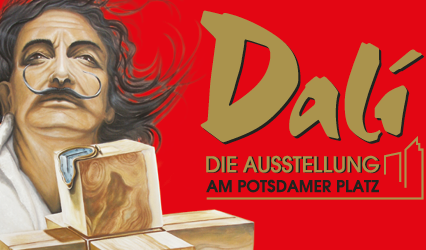Excerpts from the life of a genius
Salvador Dalí is one of the most talented artists of the modern era. He staged his works and himself in the most spectacular ways. He illustrated his own life in his series, “After 50 Years of Surrealism”, on the occasion of the opening of his museum in Figueras. These twelve works are part of “Dalí – The Exhibition on Potsdamer Platz” and form the conclusion of the tour. The biography below provides selected illustrations of the major events in his life, as selected by Dalí himself.




